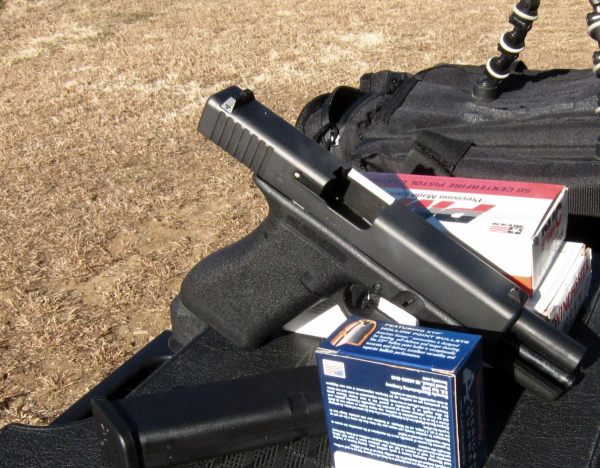
Unseasonably warm pre-Christmas weather gave me a couple of opportunities at range time in advance of the holidays and the upcoming winter storms. I wanted to work on gun handling with a strong side of grip and trigger control. I’d been reading the musings of recently-retired Greg Ellifritz and decided to work a variation of the neural fluidity exercises of Marcus Wynne.
I find that grip and trigger control combine to the foundation of shooting accurately – as well as shooting quickly and accurately. Like most, I tend to work on something “perfect for form,” increasing tempo as I’m capable, then dropping back to “perfect for form” to close. These trips are examples, but I elected to work on “handedness.”
Pistols and revolvers are handguns – not “hands”-guns. While it’s far smarter to shoot with two hands with both are available, a force multiplier in handgun accuracy and handling is found in shooting with only one hand. Moreover, it’s critical to shoot with that “less dominant” hand; going to the nonfamiliar hand forces you to work those essential elements like a new(ish) shooter.
For that reason, I’d shoot two-handed, dominant-hand only, nondominant hand only – and eventually, nondominant hand supported.
This would start with a close range – 5 yards – and a B-8 repair center, because I have lots of them and they seem to tell me what I need to know. There’s also a mini-IPSC steel silhouette on the club range, about 14” high, 11 ¼ “ wide or so, plus a 4”x4” head box and swinging head plate with ca. 5” flats.
I still had the Lipsey’s exclusive GLOCK P80, not a gun I was particularly handy with. Using Hornady American Gunner 124 gr. XTP +P, I fired the following strings:
3 rounds, two handed
3 rounds, dominant hand only
3 rounds, nondominant hand only.
The procedure was to start at low ready, bring the sights into the eye-target line and press out three hits, remove the support hand and repeat, then roll the gun into the non-dominant hand and finish out the last three rounds. I was not quick.
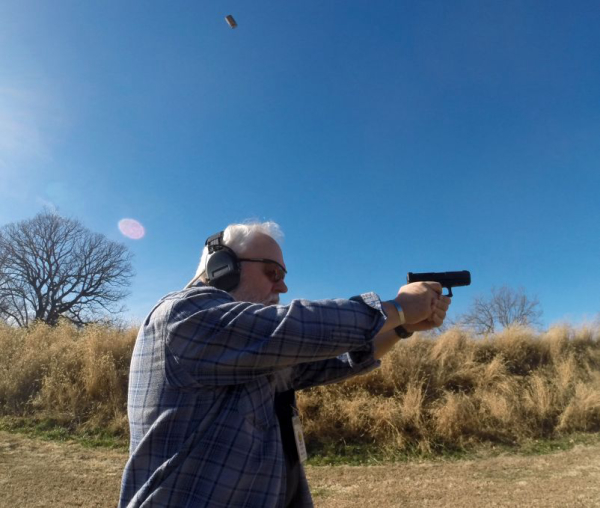
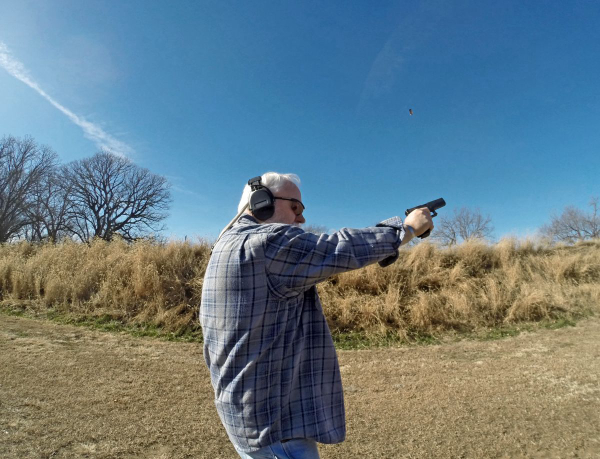
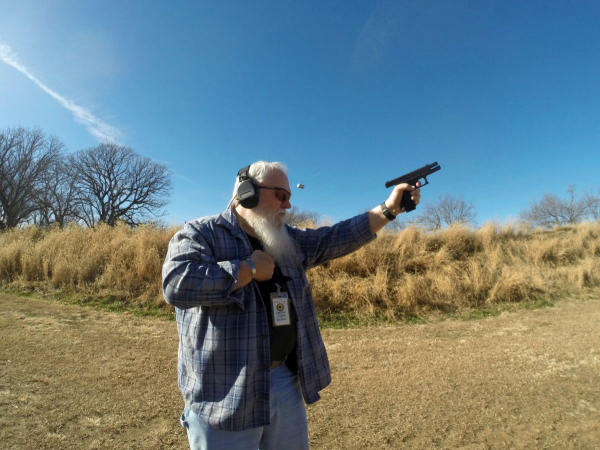
I was deliberate. Anytime you go to moving the gun from one hand to the other, you stand the risk of dropping the gun. Now the P80 won’t fire if dropped – as long as you fight the urge to grab at it as you lose control.
Grabbing at a falling firearm creates an unacceptable risk of clutching at the trigger while the muzzle is arcing. This has led to people shooting themselves, something I’m fond of avoiding myself.
While the gun-juggling? It’s learning the ‘flow,’ greasing those neural pathways to increase dexterity. While it’s not a gunfighting skill, being able to shoot one-handed with either hand can be an advantage. Regardless of one-handed or two, whichever hand one has available, you still need to (1) grip the gun firmly, (2) align the muzzle with the target and (3) keep things still through ignition; that’s still the basis of marksmanship and a fundamental of combat.
Besides, it hones gun handling skills.
The result with the P80 with +P ammo was 90/90, a fine score, but with two out of the ‘X’ ring; at that distance, it’s an X-ring exercise. I couldn’t blame the gun.
Stepping back to 25 yards really put me in my place. There was one miss, just out of the “7” ring, high. I scored 74/90 on that and was unimpressed. Never having had the sense to quit, I stepped back to 50 yards and worked on that steel silhouette with the same drill.
Yep. Fifty yards. But the target is bigger.
I placed eight hits out of nine rounds fired on the steel – yes, that included the swinging plate and that’s a lot of real estate.
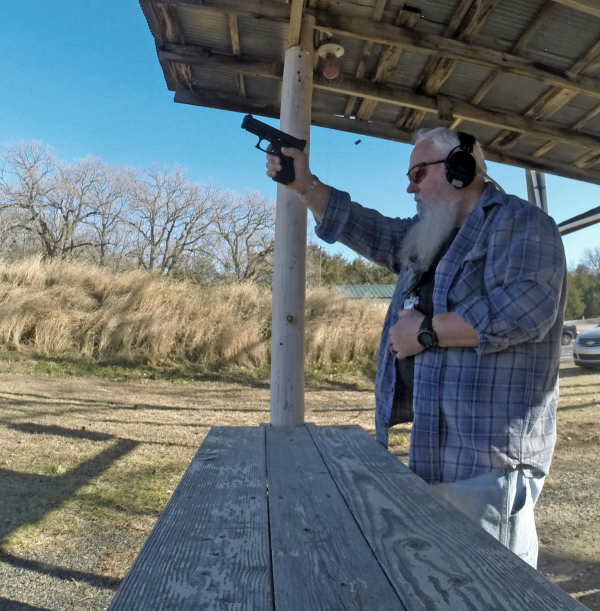
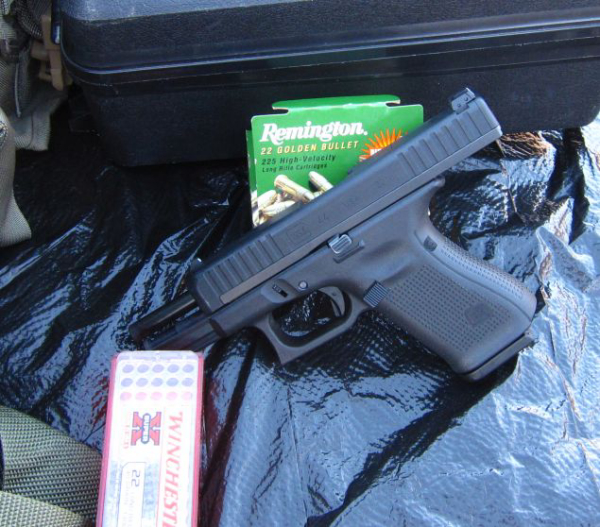
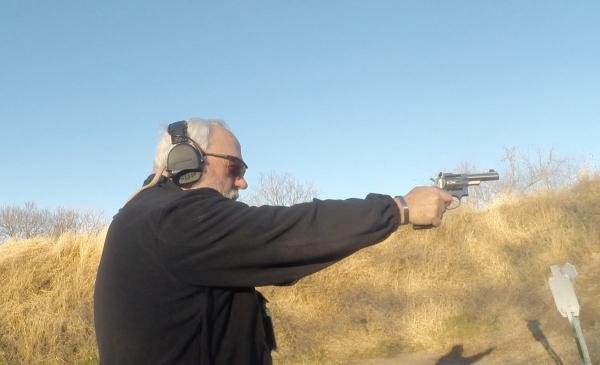
I elected to shoot some old ammo out of the new Gen5 GLOCK 23. Here’s a news flash: changing ammo in mid-stream can lead to negative results. At five yards on the B-8 center, I nearly duplicated the work with the Lipsey’s GLOCK P80 with 90-7X. At 25 yards, that fell apart with only 69/90. From fifty yards on the freshly painted steel, I shot PMC 165 grain ball. Having fired 180 gr. Winchester HP for the first 18 rounds and changing to the lighter bullet didn’t work well. Interestingly, I expected the PMC to go low. I compensated, contriving to put hits over the steel into the backstop. This led to four hits out of nine rounds fired. The last two, weak hand unsupported, helped me out. I’d figured out the appropriate solution and both of those rounds hit the steel.
The next day, I hit the range with rimfires, the GLOCK 44 and the Ruger GP100-22-4 for a five-round ‘fluidity’ drill and a walk-back on the steel. This time I added a non-dominant hand supported stage, for twenty rounds total per gun.
The G44 with Remington Golden Bullet yielded 200-20X up close. I followed with the walk-back on steel. I used the swinging 5x5 plate at 10-, 15- and 20-yards strong hand only. I used the whole target for 25 yards and back, freestyle. I had a pair of misses during the walk back.
At fifty yards, I worked on five rounds dominant hand, three rounds two-handed and two rounds weak hand supported. There were five hits out of ten rounds, all in the upper half of the silhouette/head box.
Using the Ruger GP100 22, I shot a 200-18x up close, and did the walk back to 45 yards on steel. Managing the DA trigger one-handed is a chore.
To work speed, I went back to the GLOCK 44. At ten yards on the steel, I went for timed single hits from low ready using the PACT timer. The times hovered between .64 to .85 second, with all hits.
I finished with precision at four yards using the barcode on a B-8. Using the rimfire GLOCK, I put five hits into 7/8” with three in one hole. I finished with shooting left hand unsupported at the trade mark on the upper left of the target. The result was one hole, about ½” across.
Shooting left-handed forces me to concentrate on grip and trigger – a good lesson to take from the range.
-- Rich Grassi